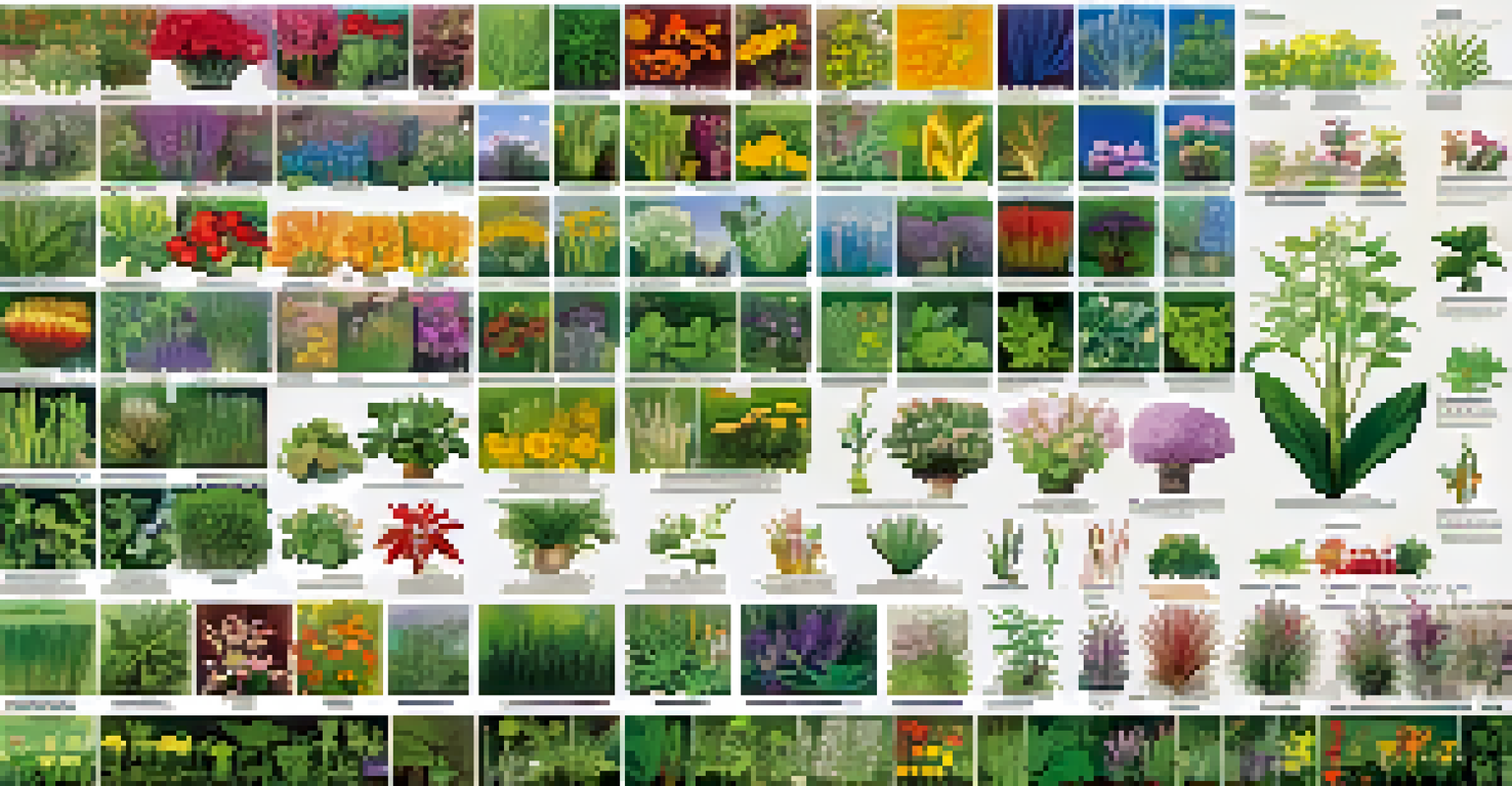Taxonomic Hierarchy: From Kingdom to Species in Botany

What is Taxonomic Hierarchy in Botany?
Taxonomic hierarchy is a structured system used to categorize and identify living organisms. In botany, this means organizing plants into various levels that reflect their relationships and characteristics. This classification helps scientists communicate effectively about plant species and understand their evolutionary history.
The more we know about the plant kingdom, the more we can appreciate the intricate web of life that sustains us.
The hierarchy consists of several ranks, starting from broad categories and narrowing down to specific ones. For instance, it begins with the kingdom, then moves to phylum, class, order, family, genus, and finally species. Each level provides vital information that helps distinguish one group of plants from another.
Understanding this hierarchy is crucial for botanists, horticulturists, and anyone interested in plant life. It not only aids in identification but also emphasizes the importance of biodiversity and conservation efforts within ecosystems.
The Kingdom: The Broadest Classification
At the top of the taxonomic hierarchy sits the kingdom, which encompasses a massive range of organisms. In botany, the primary kingdom is Plantae, representing all plants, including trees, flowers, and ferns. This broad classification signifies that all members share fundamental characteristics, primarily their ability to perform photosynthesis.

Kingdoms are essential in understanding the overall diversity of life on Earth. For example, while the Plantae kingdom includes a vast array of plants, it is distinct from other kingdoms like Animalia, which includes all animals. This separation helps scientists focus on plant-specific traits and behaviors.
Taxonomic Hierarchy Explained
Taxonomic hierarchy organizes plants into structured levels, aiding in identification and understanding of their relationships.
The concept of kingdoms serves as a foundation for the entire taxonomic hierarchy. By categorizing organisms so broadly, it becomes easier to delve deeper into more specific classifications that reveal the intricate relationships among different plant species.
Phylum: Grouping Similar Plants Together
The next level down is phylum, which groups plants that share certain structural features. For example, the phylum Angiosperms contains all flowering plants, while Gymnosperms includes non-flowering plants like conifers. This classification is helpful in identifying plants based on their reproductive structures.
In every seed lies the potential for a unique and diverse plant, just waiting for the right conditions to flourish.
Phylum distinctions are vital for understanding the evolutionary pathways of plants. They allow botanists to study how different species have adapted to their environments over time. For instance, knowing a plant belongs to a specific phylum can provide insights into its growth habits and ecological roles.
In essence, phylum serves as a bridge between the broad kingdom classification and the more specific groupings that follow. It narrows down the vast diversity of the plant kingdom into more manageable categories for further study.
Class: Refining Plant Groupings Further
Within each phylum, plants are categorized into classes based on additional shared traits. For instance, the class Magnoliopsida includes all dicotyledons, which are plants that typically have two seed leaves. This further refinement allows for a more detailed understanding of plant characteristics.
Classes help botanists identify plants based on their morphological features, such as leaf structure and flower type. This classification is useful in horticulture and agriculture, where specific traits are often desirable for cultivation. Knowing the class can guide decisions about plant care and breeding.
From Kingdom to Species
The hierarchy moves from broad categories like kingdom to specific classifications such as species, highlighting the diversity of plant life.
Thus, the class level plays a crucial role in the taxonomic hierarchy, offering even more specificity as botanists work their way down from the kingdom, helping to clarify the relationships and differences among plant species.
Order: A Step Closer to Specificity
The order is another level in the taxonomic hierarchy, grouping together families that share certain characteristics. For example, the order Rosales includes families like Rosaceae (roses) and Moraceae (figs). This classification helps highlight relationships between different plant families.
Understanding plant orders is essential for studying ecological interactions and plant evolution. By grouping plants into orders, scientists can explore how various species have adapted to their environments and how they interact with one another. This knowledge is invaluable in conservation efforts.
The order level is significant because it narrows down the classification even further, allowing botanists to focus on specific traits and relationships among plants. This precise classification aids in research, education, and communication about plant species.
Family: Identifying Related Plants
Each order is divided into families, which group plants that are closely related. For example, the family Asteraceae includes many familiar plants like sunflowers and daisies. This level of classification is particularly useful for horticulturists and gardeners who seek to understand plant relationships.
Families often share key traits, such as flower structure or leaf arrangement, making it easier to identify plants. Knowing a plant's family can provide insight into its care requirements and growth habits, helping gardeners choose compatible plants for their gardens.
Importance for Conservation
Understanding plant taxonomy is crucial for conservation efforts, as it helps protect biodiversity and the roles each species plays in ecosystems.
As we move down the hierarchy, family classification helps create a clearer picture of plant diversity. It allows for more focused study and makes it easier to understand the relationships among various species within the same family.
Genus: The First Step to Individual Species
The genus is a more specific classification that groups together species sharing common characteristics. For example, the genus Rosa includes all species of roses, showcasing their similarities. This level is often what most people think of when discussing plant names, as it is part of the scientific name.
Understanding the genus helps botanists and gardeners identify plants more easily. The genus name is always capitalized and italicized in scientific writing, making it a key player in plant classification. This clarity is vital when discussing plants in research and education.

As we approach the final level of the taxonomic hierarchy, the genus provides a crucial link between broader classifications and individual species, paving the way for more specific identification.
Species: The Most Specific Classification
At the bottom of the taxonomic hierarchy lies species, the most specific classification of all. A species consists of individuals that can interbreed and produce fertile offspring. For instance, Rosa rubiginosa refers to a specific type of rose, distinguishing it from others in the genus Rosa.
Understanding species is fundamental for biodiversity and conservation efforts. Each species plays a unique role in its ecosystem, and knowing the distinctions between species helps protect the delicate balance of nature. Conservationists often focus on protecting species at risk of extinction.
In summary, the species level is where all the previous classifications converge. It represents the ultimate goal of taxonomy in botany: to identify and preserve the incredible diversity of plant life on our planet.